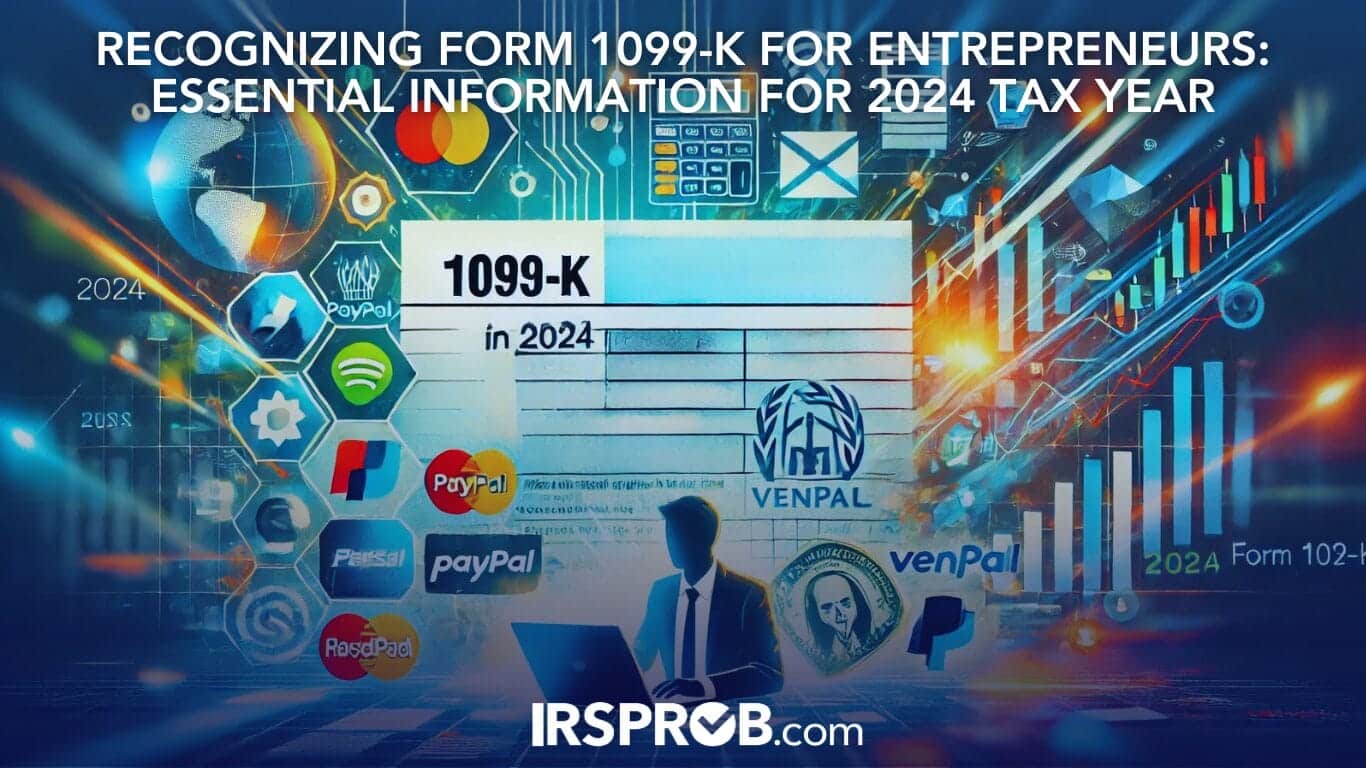
As a business owner, it’s crucial to stay informed about the latest tax reporting requirements, especially with changes that can impact how you report income. One key document you might encounter is Form 1099-K, which reports payments you received via credit cards, debit cards, and third-party payment networks like PayPal, Venmo, and Etsy. With the 2024 tax year introducing changes to reporting thresholds, now is the time to understand how this form affects your tax filing.
What is Form 1099-K?
Form 1099-K reports the total payments you receive during the year from payment cards or third-party networks like online marketplaces. It’s a summary of the gross payments you receive from goods, services, or property rentals. For 2024, the IRS plans to lower the reporting threshold to $5,000 as part of a phased implementation, with an eventual goal of reducing the threshold to $600 in 2025. This means you’ll need to be prepared to account for any payments you receive that meet or exceed these limits, especially if you run a business that sells products or services online.
Who Needs to Pay Attention?
If you sell goods, rent property, or provide services through platforms like eBay, Airbnb, or Uber, you’re likely to receive a 1099-K if your payments exceed the $5,000 threshold. This form also applies if you use peer-to-peer payment apps or digital wallets, such as Venmo or PayPal, for business transactions.
The 1099-K reporting requirement doesn’t apply to personal transactions, like splitting the bill for dinner with friends or receiving a birthday gift. It’s important to distinguish between personal and business payments on these platforms to ensure accurate reporting.
What Shouldn’t Be Reported on Form 1099-K?
Not all payments are taxable income, and Form 1099-K shouldn’t include personal gifts or reimbursements from friends and family. For example, if your roommate reimburses you for shared utilities, this is not considered taxable income. However, it’s essential to keep thorough records and label personal transactions appropriately in your payment apps to avoid confusion.
Steps to Take When You Receive a Form 1099-K
- Review the Gross Payment Amount: The gross payment amount on Form 1099-K represents the total payments you received. It doesn’t account for fees, refunds, shipping costs, or discounts. It’s up to you to adjust your income accordingly when you file your tax return.
- Keep Accurate Records: Compare the gross payment amount reported on Form 1099-K with your own business records, such as receipts and merchant statements. Good record keeping is essential to ensure that your income and deductible expenses are accurately reported.
- Report Your Income Correctly: Depending on your business structure, you’ll need to report Form 1099-K payments along with other income sources on your tax return. For self-employed individuals, gig workers, and freelancers, these payments should be reported as business income. Be sure to include any other payments you received by cash, check, or other means.
- Watch for Errors: Sometimes, Form 1099-K is issued in error. If the form includes non-business transactions or reports incorrect amounts, contact the payment platform immediately to request a correction. Always keep a copy of the original form and any correspondence for your records.
Potential Challenges for Business Owners
With the lowering of the 1099-K threshold to $5,000 for 2024, small businesses and side hustlers may need to adjust how they track income and expenses. This could result in more 1099-K forms being issued to business owners who were previously under the threshold.
Additional Considerations for Business Owners:
- Avoid Common Mistakes: Reporting mistakes can lead to audits or penalties. Make sure that any expenses related to your payments—such as platform fees, shipping, and refunds—are properly deducted from your gross income.
- Plan for State-Level Reporting: Some states have different thresholds for 1099-K reporting, and it’s crucial to be aware of these to avoid discrepancies between state and federal filings.
- Understand the Hobby vs. Business Distinction: The IRS treats hobby income differently from business income. If you’re unsure whether your activity qualifies as a business, review the IRS guidelines on hobby versus business activities.
Conclusion
Form 1099-K is becoming a key document for business owners who accept payments through third-party networks. As tax reporting thresholds change, it’s more important than ever to maintain accurate records, ensure your income is reported correctly, and seek professional tax advice when needed. By staying proactive and understanding your obligations, you can avoid complications during tax season and ensure that your business remains compliant.
If you have any concerns about Form 1099-K or need help preparing your taxes, don’t hesitate to contact a tax professional.






